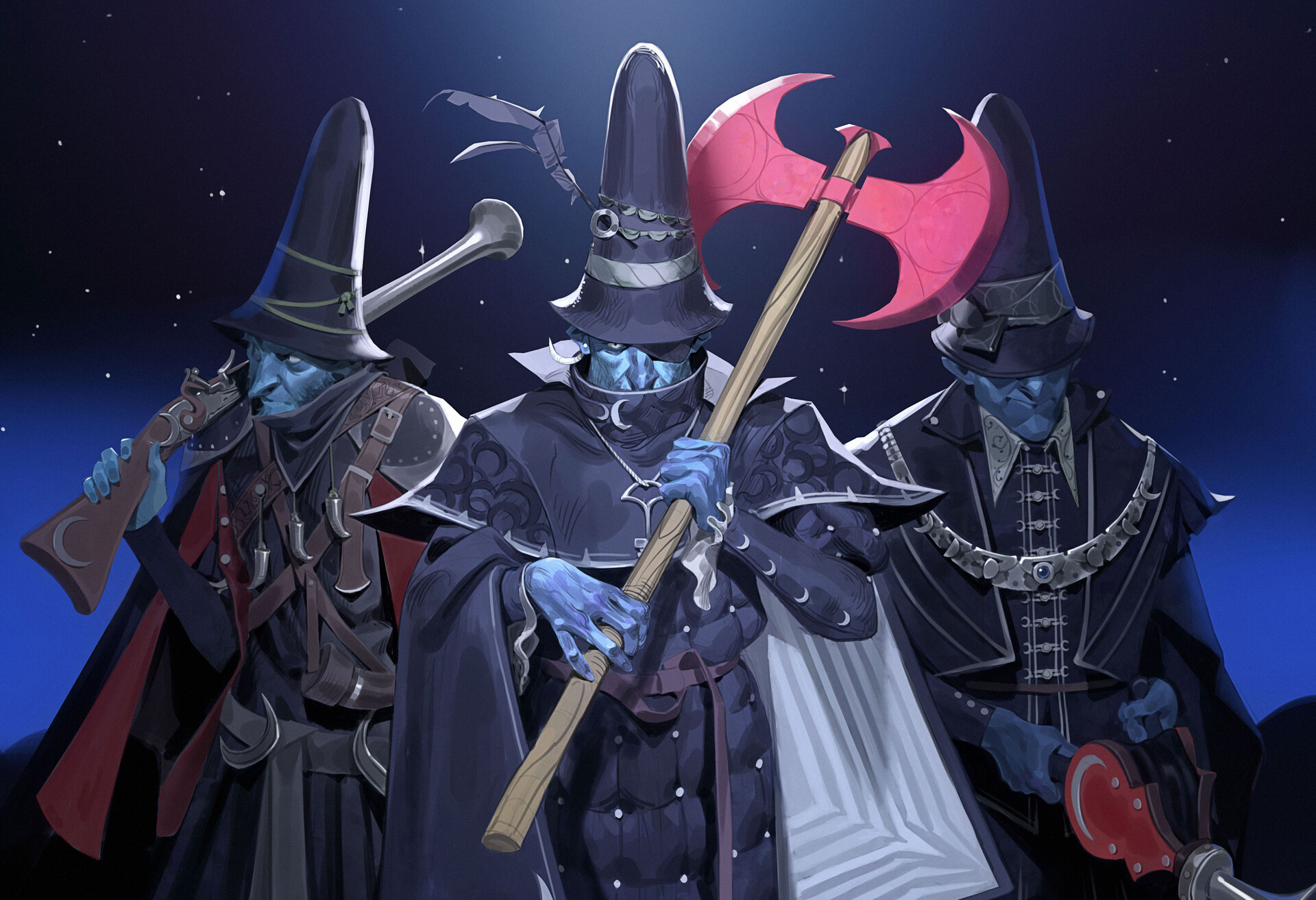Concept Art: The Three Robbers (& inspirations)
Original Childhood classic by Tomi Ungerer: Summary
Triplet brothers are very successful in their exploits as highwayman robbers: Dominik using his blunderbuss to intimidate coachmen and passengers, Felix using his pepper-blower to disorientate and blind carriage horses, while Maximus vandalizes carriage wheels with his red battle axe. But, one day the robbers intercept a carriage, only to find a lonely girl named Tiffany whose parents died and is being sent to live with a wicked aunt who runs an orphanage. Not wanting to go to the orphanage, Tiffany tricks the robbers into believing she was the daughter of a maharaja, and is carried off to their hideout. While Tiffany makes the robbers question what they intend to do with their amassed wealth, she helps them learn to read and write when they want to send a ransom letter. The robbers eventually learn Tiffany lied to them when they found her missing child poster. Tiffany is remorseful and leaves in shame to head to the orphanage.
Tiffany encounters two runaway orphans along the way to the orphanage. From them she learns that Auntie places the children in mandatory child labor to harvest sugar beets and extract the sugar for her pastry-making machine to make her desserts. After secretly entering the orphanage while the runways are captured, Tiffany exposes Auntie's pastry hoard to the other orphans. Auntie was about to punish Tiffany when the robbers arrive, revealed to be runaway orphans themselves as they make amends with Tiffany. Auntie refuses to hand Tiffany over to the robbers before falling into her pastry-making vat in a fit of insanity and is turned into a cake which the orphans eat. The robbers then use their wealth to buy the orphanage, which becomes a haven for all uncared children; eventually growing into a large town with its residents revering the robbers.
You can really see the Classic Fairytale gruesomeness, and I do like the additional details that are not in the Weston Woods film, but I find some elements unfit for my short story adaptation (the child labor part being one of them); it loses the very reasons I loved reading and watching it, though I saw it in its edited version by Gene Deitch. The rough robbers and their transformation when Tiffany joined their thieving band. A found family kind of story.
If you haven’t watched the adapted 6-minute film, I recommend you do so! You’ll see what I mean. This story is one of my childhood favorites, along with many other scholastic videos like Trashy Town, Rosie's Walk, and other beloved classics.
Weston Woods 6-minute adaptation (short film) and children’s book, 1972:
https://youtu.be/oE3mWVZ1k74?si=o8M9t3gMeYTmZG9B
https://youtu.be/oE3mWVZ1k74
Concept designs, Artwork, and descriptions:
Images by Marion Kivits on Artstation.


I like this concept art. Mainly the clothing design and how, in the short film, their skin looked blue in the shadow of the moonlight. I won't use these images; I will simply use them as a good reference point. As well as these images by Zacharie K. On Artstation. (see below)


As you can see, this art style models the picture book, both mainly known and adapted from the 2007 feature film, and shortened in English with the alternate title: Trick or Treaters.
I don’t quite like the character designs, but I admire the setting of little Tiffany in the carriage.
Gene Deitch’s art style plays into almost the macabre, and the scenes look somewhat haunting, yet simplistic and visually appealing. A children's style for a children’s film.
Comments
Post a Comment